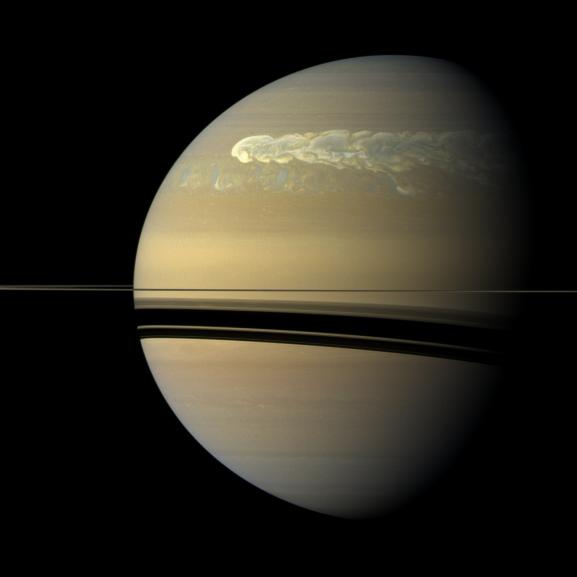
Jupiter's Great Red Spot may get most of the attention, but it's hardly the only big weather event in the Solar System. Saturn, for example, has an odd hexagonal pattern in the clouds at its north pole, and when the planet tilted enough to illuminate it, the light revealed a giant hurricane embedded in the center of the hexagon. Scientists think the immense storm may have been there for years.
But Saturn is also home to transient storms that show up sporadically. The most notable of these are the Great White Spots, which can persist for months and alter the weather on a planetary scale. Great White Spots are rare, with only six having been observed since 1876. When one formed in 2010, we were lucky enough to have the Cassini orbiter in place to watch it from close up. Even though the head of the storm was roughly 7,000 km across, Cassini's cameras were able to image it at resolutions where each pixel was only 14 km across, allowing an unprecedented view into the storm's dynamics.
The storm turned out to be very violent, with convective features as big as 3,000 km across that could form and dissipate in as little as 10 hours. Winds of over 400 km/hour were detected, and the pressure gradient between the storm and the unaffected areas nearby was twice that of the one observed in the Great Red Spot of Jupiter. By carefully mapping the direction of the winds, the authors were able to conclude that the head of the White Spot was an anti-cyclone, with winds orbiting around a central feature.
Convection that brings warm material up from the depths of Saturn's atmosphere appears to be key to driving these storms. The authors built an atmospheric model that could reproduce the White Spot and found that shutting down the energy injection from the lower atmosphere was enough to kill the storm. In addition, observations suggest that many areas of the storm contain freshly condensed particles, which may represent material that was brought up from the lower atmosphere and then condensed when it reached the cooler upper layers.
The Great White spot was an anticyclone, and the authors' model suggests that there's only a very narrow band of winds on Saturn that enable the formation of a Great White Spot. The convective activity won't trigger a White Spot anywhere outside the range of 31.5° and 32.4°N, which probably goes a long way toward explaining why the storms are so rare.
Although the 2010 storm was also monitored using Earth-based instruments, both it and the polar hurricane show the value of having an observatory in residence at Saturn (and, by extension, at other planets). The local observations allow a much more detailed view of what's happening within the Great White Spot; without them, it would be impossible to have built the detailed model of the event. In the case of the polar hurricane, the feature was largely invisible except in the infrared from most of Cassini's time in orbit, as no light reached it during the winter of Saturn's northern hemisphere. The only reason the storm could be imaged is because Cassini was around long enough and could take a carefully planned orbit to make observations.
Nature Geoscience, 2013. DOI: 10.1038/NGEO1860 (About DOIs).
reader comments
23